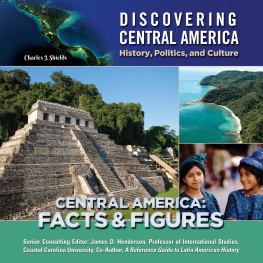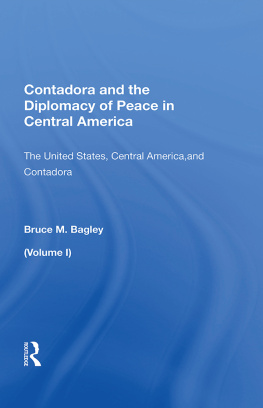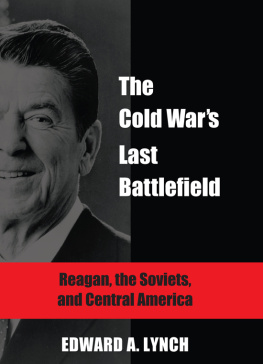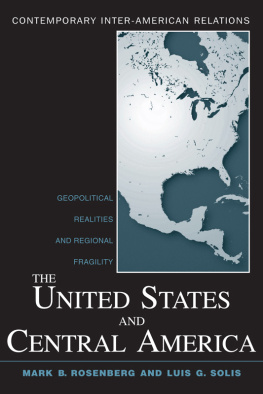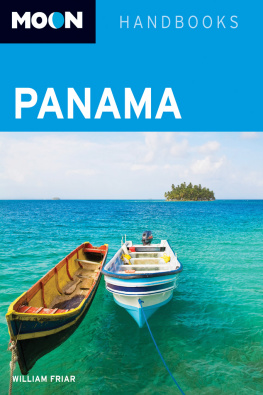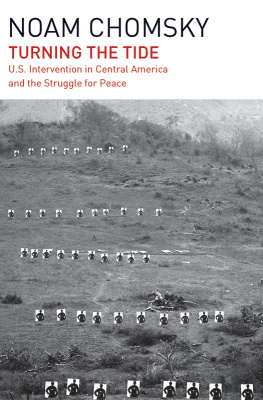Our Own Backyard
1998 William M. LeoGrande
All rights reserved
Manufactured in the United States of America
The paper in this book meets the guidelines for permanence and durability of the Committee on Production Guidelines for Book Longevity of the Council on Library Resources.
Library of Congress Cataloging-in-Publication Data
LeoGrande, William M.
Our own backyard: the United States in Central America,
19771992 / William M. LeoGrande.
p. cm.
ISBN 0-8078-2395-3 (cloth: alk. paper)
ISBN 0-8078-4857-3 (pbk.: alk. paper)
1. Central AmericaForeign relationsUnited States.
2. United StatesForeign relationsCentral America.
3. United StatesForeign relations19771981.
4. United StatesForeign relations19811989.
5. United StatesForeign relations19891993. I. Title.
F1436.8.U6L453 1998
327.73072809048dc21 97-18198
CIP
03 02 01 00 99 6 5 4 3 2
Brief excerpts from the following journal articles are used in this book: William M. LeoGrande, The Revolution in Nicaragua: Another Cuba? Foreign Affairs 58 (Fall 1979): 2850, and William M. LeoGrande and Carla Anne Robbins, Oligarchs and Officers: The Crisis in El Salvador, Foreign Affairs 58 (Summer 1980): 10841103. Reprinted by permission of Foreign Affairs; copyright 1979 and 1980 by the Council on Foreign Relations, Inc. William M. LeoGrande, From Reagan to Bush: The Transition in U.S. Policy toward Central America, Journal of Latin American Studies 22, no. 3 (October 1990): 595621. Reprinted by permission of Cambridge University Press.
To my parents, John and Patricia LeoGrande,
and my wife and partner, Martha Langelan
Contents
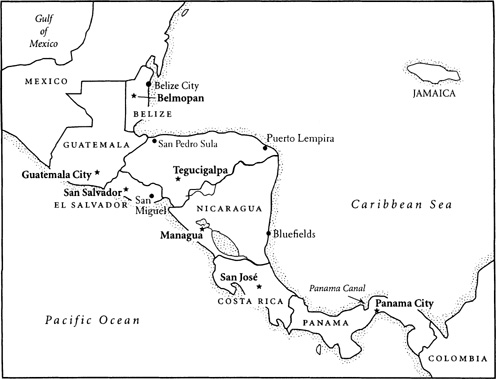
Preface
When I began this book, I intended to write an account of the domestic opposition to Ronald Reagans Central America policy, focusing on the Congress. Not since Vietnam had Americans been so bitterly divided over a foreign policy issue as they were over Central America. I soon realized, however, that investigating the domestic debate was like pulling on a loose threadit lead inexorably to other questions.
To understand the political struggle between the Reagan administration and its critics, it was first necessary to examine what was happening in Central America. As U.S. involvement deepened, a tension arose between the instinct of many U.S. policymakers to preserve Washingtons traditional hegemony in the region, and the desire of Central Americans to control their own destiny. On this issue, Washington discovered adversaries not only among Marxist guerrillas on the left, but also among military officers and businessmen on the right. Maintaining even tenuous control over allies such as the Salvadoran armed forces or the Nicaraguan contras proved as difficult for Washington as plotting strategy against the Salvadoran guerrillas and the Sandinistas.
In the United States, the tempo of the debate between the Reagan administration and its critics waxed and waned with the rhythms of the war on the ground. As the regions civil strife escalated, Reagans opponents charged that his policy was failing to achieve its stated objectives; Reagan replied that the critics caviling tied his hands, preventing success.
I was also compelled to look at how policy was formulated inside the Reagan administration. From the beginning, it was beset by a severe internal schism between self-described hard-liners and pragmatists who struggled with one another for control over foreign policy in general and Central American policy in particular. On Central America, the hard-liners were inclined toward military solutions, and they bitterly opposed any diplomatic accord that gave Washington less than total victory. For the pragmatists, Central America was not the most important place on the globe, and the wars there were less a test of ideological mettle than a challenge to traditional U.S. security interests. If those interests could be reasonably safeguarded by diplomatic compromise, the pragmatists were willing to pursue it.
The policy differences between hard-liners and pragmatists were often reinforced by rivalries of ambition and personal animosity. It was not uncommon for different officials to describe U.S. policy in hopelessly contradictory ways within a few daysor even hoursof one another. Both camps leaked continually in an effort to gain the upper hand in the internal tug of war. With a president reluctant to resolve conflicts among his senior advisers and notoriously inattentive to the details of policy, the administrations internecine conflict over Central America was never definitively resolved. Every policy decision bore the scars of it.
On one issue, however, the hard-liners and pragmatists could agree: both regarded the policy prescriptions of the liberal Democrats in Congress as anathema. The biggest battles fought in Washington over Central America pitted the Reagan administration against Congress, and most administration officials regarded the Democrats efforts to promote an alternative policy as ill informed and illegitimate.
Finally, I had to look beyond Central America at the behavior of U.S. allies and adversaries. For Ronald Reagan and his conservative loyalists, Central America was not intrinsically important. Its significance derived from its place in a global context; it was a theater in the Cold War struggle with the Soviet Union. Indeed, Central America was the last major battle of the Cold War. Reagans policy cannot be understood outside that context, and the opposition to his policy from liberal Democrats reflected their rejection of Reagans Manichaean conception of international affairs. While Reagan invariably pointed to Soviet and Cuban machinations as justification for his approach, liberal Democrats pointed to the nearly universal opposition to U.S. policy among allies in Latin America and Western Europeopposition that manifested itself in active efforts to resolve Central Americas armed conflicts diplomatically, despite persistent resistance from Washington. No one caused the Reagan administration more headaches than Costa Rican president Oscar Arias, whose regional peace plan won him the Nobel Peace Prize.
For me, then, what began as a relatively bounded project examining the domestic debate over Central America evolved into a comprehensive history of U.S. policy toward the region during its decade of crisishow policy was made, how it worked, and how the administration tried to sell it to the American people. From the overthrow of the Somoza dynasty in Nicaragua and the outbreak of the civil war in El Salvador in the late 1970s, to the final regional peace settlements negotiated a decade later at the end of the Cold War, this book chronicles the strugglesboth in Central America and Washingtonthat shaped the regions destiny. I have tried to give a reasonably full account of how the regional crisis unfolded on the ground, but the principal venue of this story is Washington, D.C. For good or ill, Central Americas fate during this crisis depended fundamentally on decisions made in Washingtondecisions over which Central Americans themselves had little influence.
The narrative is predominantly chronological. Within that basic framework, I have tried to weave together four thematic elements corresponding to the dynamics described above: (1) the conflicts on the ground in the region; (2) the conflicts within the U.S. administration over what policy should be; (3) the domestic debate between administration supporters and critics, especially in Congress; and (4) the role played by other countries in Latin America and Europe in alleviating or exacerbating the crisis.


